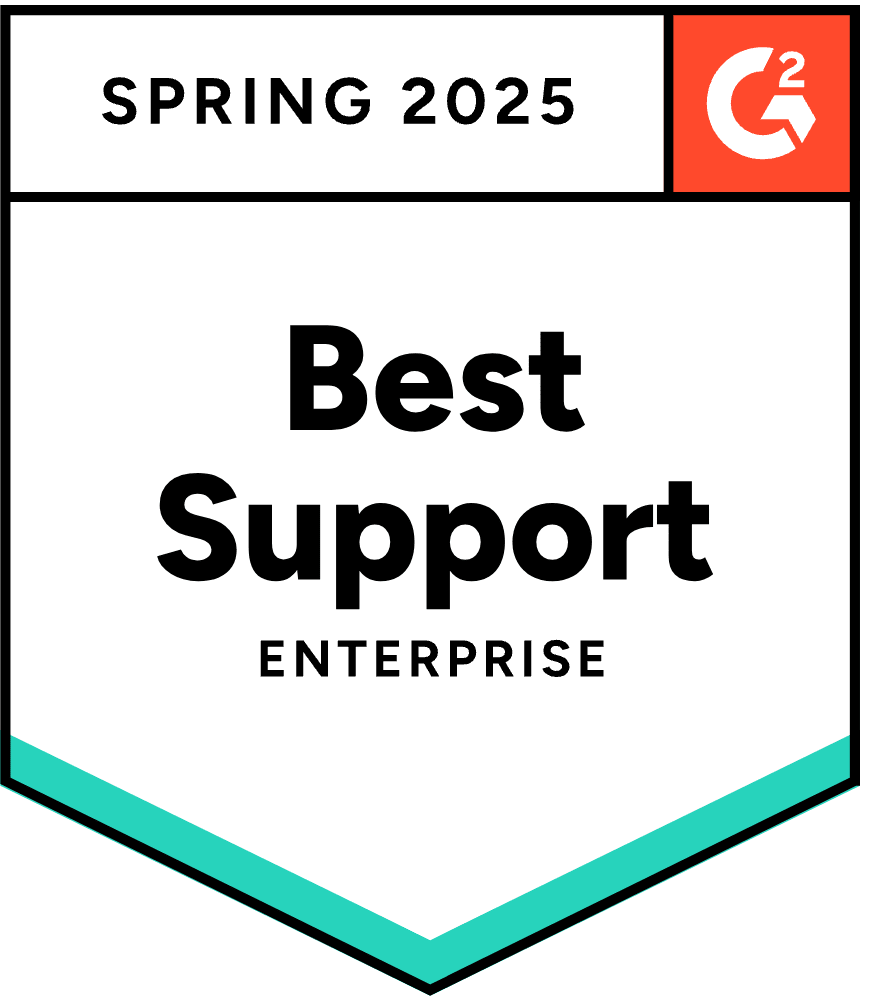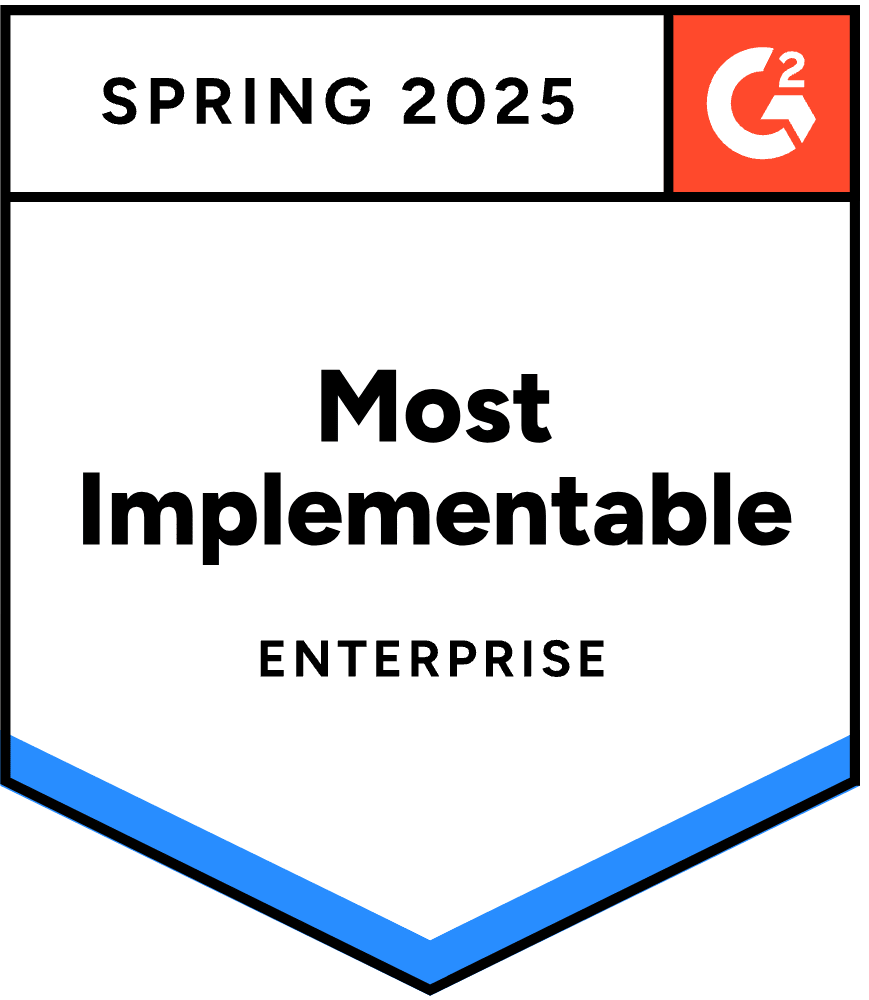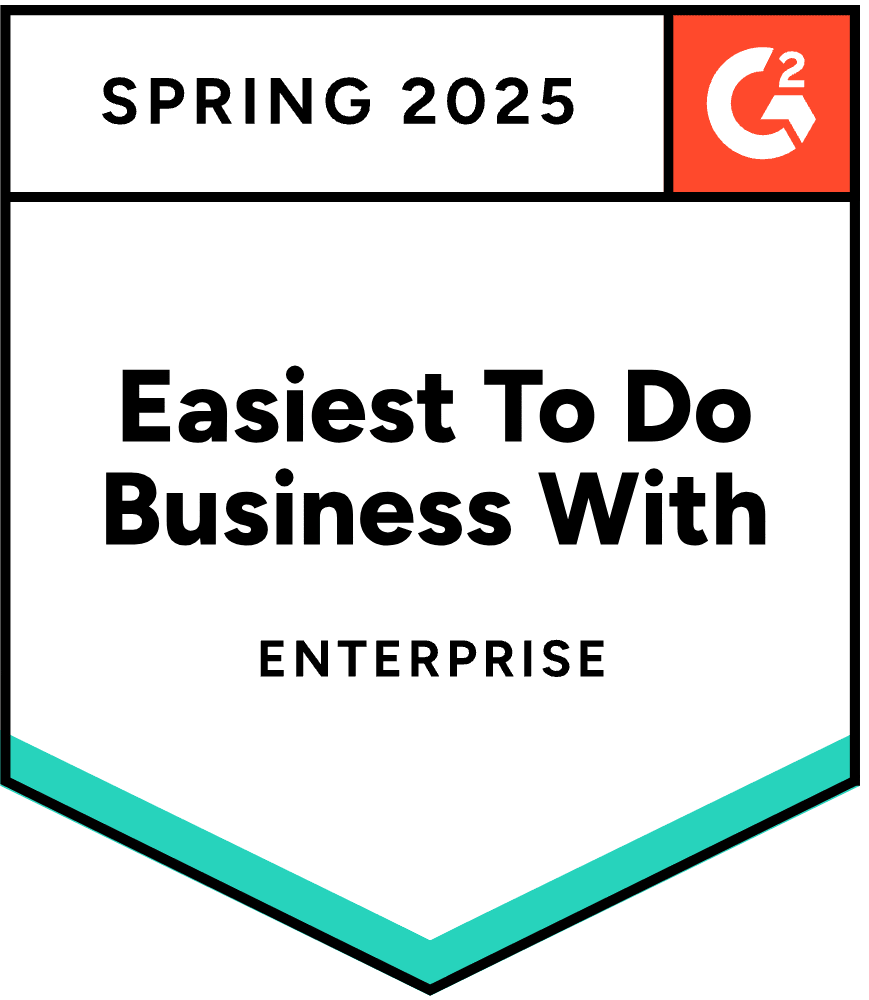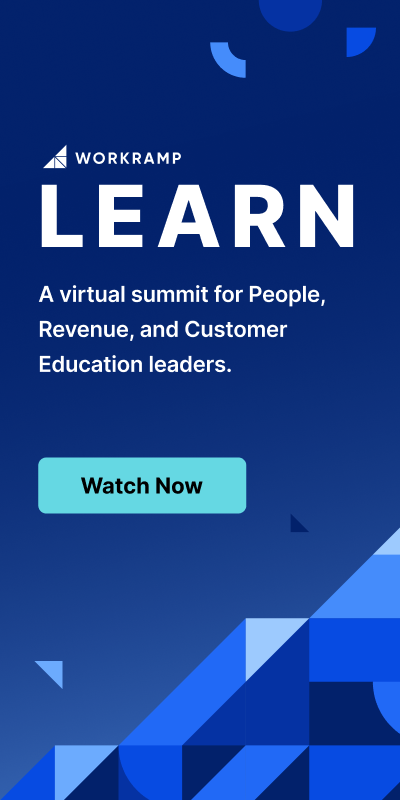Formal Learning vs. Informal Learning: The Education Evolution
Jen Dewar | WorkRamp Contributor
View bioLearning Tips Straight to Your Inbox
Your employees are your organization’s greatest asset. To attract and retain top talent and gain a competitive edge, it’s vital for your employees to continuously learn and improve.
An incredible 94 percent of employees said they would stay at a company longer if it invested in advancing their careers.
You can help your employees develop in two ways: through formal learning and through informal learning opportunities. Identifying the best learning approach to upskill your employees is essential.
Uncover the hidden treasures of formal and informal learning, and master the art of harnessing their combined potential to maximize your team’s capabilities.
In this post:
What is formal learning?
Formal learning is structured training that enables team members to expand their knowledge, skills, and abilities. It often comes in an instructor-led course, workshop, seminar, or training session with clear objectives and goals.
This differs from informal learning, which is more spontaneous and organic. Your team members engage in informal training when they ask a colleague’s advice or read an article to help them solve a problem.
In other words, formal learning is workplace training provided to team members, while informal learning is a development opportunity your team members find on their own
Formal learning delivery methods
Formal training has traditionally happens in a classroom setting, but online training has been gaining popularity—especially in recent years. This expands how you can facilitate formal learning to meet your team’s unique needs, preferences, and learning styles.
Formal learning delivery methods include:
- Online learning courses
- Webinars
- Videos
- Virtual reality
- College courses
- Workshops
- Seminars
- Coaching
- Tutorials
Read more: eLearning Content: 24 Types of Include in Training
Some of these delivery methods can be used both in-person and online. For example, you can present a seminar via classroom instruction or virtual instructor-led training. Videos can be used during a workshop or within an online training course.
Formal learning methods also pair nicely with informal training opportunities by building your team’s collective knowledge and enabling knowledge sharing between team members.
For example, after a team member attends a seminar, they may share their learnings and insights with their colleagues. This may be done through a Slack chat, water cooler conversation, or formal mentoring.
Formal learning example
What does formal learning look like in practice? PartnerHero offers a great example.
PartnerHero is a business process outsourcing (BPO) company focused on helping innovative companies make an impact in economically underserved communities around the world. Robyn Barton, Global Director of Talent Development, manages PartnerHero’s training and development team.
Robyn chose WorkRamp as the platform for PartnerHero’s formal learning. The Learning Cloud from WorkRamp allows the organization to create a culture of learning with a holistic focus. Not only does PartnerHero offer formal training for skill development, but there are also courses for DE&I, mental health, stress management, fitness, and more.
With the Learning Cloud, PartnerHero was able to ensure 100 percent compliance with required HR training, deliver personalized training at scale, and achieve learner satisfaction scores of 4.82/5. PartnerHero is a great example of supporting employee growth with ongoing formal learning.
When to use formal learning
Informal and formal learning are each useful in different scenarios.
Informal training comes in handy within a team member’s day-to-day work as they solve specific business problems and work with colleagues to overcome key challenges.
Internal knowledge sharing is an important source of continuous learning and professional growth.
Formal learning programs are more useful if your training has a definitive goal, a deadline, or needs to be measured. This includes new hire onboarding, upskilling and reskilling, and annual compliance training.
New hire onboarding
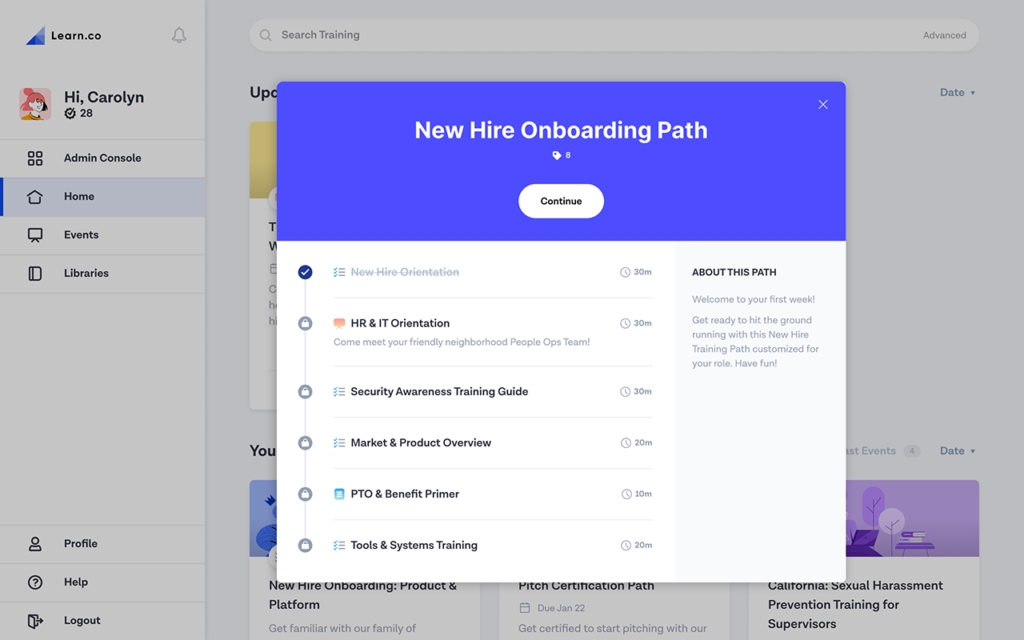
A new hire onboarding path in WorkRamp
New hires reach a 25 percent productivity rate in their first month on the job, 50 percent in their second month, and 75 percent in their third month, on average.
Formal training and onboarding can guide your team members as they acclimate to a new role, team, and company. This gives each team member a solid baseline to develop core competencies and get up to speed quickly.
Early learning objectives might include:
- Product knowledge
- Skill development
- Technology proficiency
- Information security understanding
- Workplace safety awareness
Effective onboarding doesn’t just increase your team’s competency—it can also improve new hire satisfaction and engagement. Seventy percent of employees who have an exceptional onboarding experience say they have “the best possible job.”
These employees are also 2.6x more likely to be extremely satisfied with their workplace—and more likely to stay. A formal new hire onboarding process is well worth the investment.
Upskilling and reskilling
Most of today’s jobs didn’t exist in 1940, and 85 percent of jobs that will exist 10 years from now don’t exist. It’s no surprise that 9 in 10 executives and managers report that their organizations either face a skills gap or expect one to develop within the next five years.
Using formal learning for upskilling and reskilling can help your organization, and team members adapt. Structured workplace learning helps employees develop skills to perform better in their current jobs and learn new skills to transition into future roles.
This goes beyond specialized job skills like advertising or web development and includes transferable soft skills such as analytical thinking and leadership.
A structured learning experience can also help you facilitate career growth. Career pathing and formal training enable your team members to identify and develop the skills they need to grow within your organization.
Some company leaders can be wary of investing in a formal learning process as it could lead to increased employee poaching from competitors—but that’s not generally the case. Career development conversations and encouraging employees to pursue internal opportunities increase the likelihood that they’ll feel engaged instead of needing a backfill by more than 2x. And 75 percent of employees who receive promotions will stay with the company for at least three years.
Compliance training
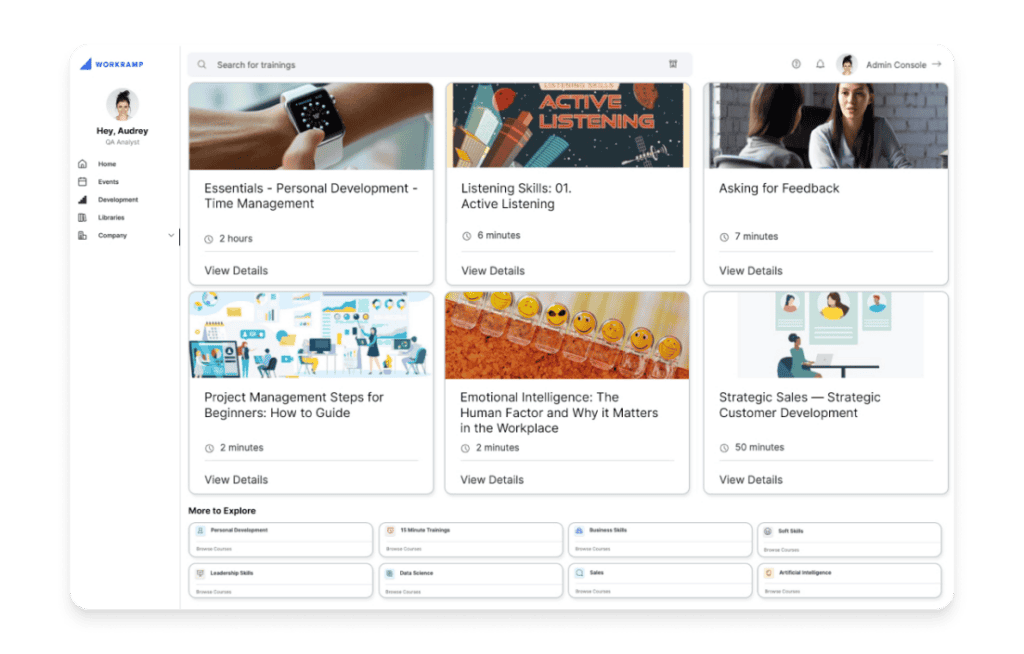
Workplace learning is mandatory within certain industries and occupations to ensure team members understand relevant laws and regulations—and how to comply with them. This may include data privacy and security training, workplace safety, or fraud detection.
Compliance training is generally included in the employee onboarding process, though refresher training is often necessary. This will help ensure your team members stay up to date on regulatory changes and compliance practices.
Formal learning is crucial to ensure your workers receive the right information at the right time so your organization can reduce risk and liability. That’s not what you want to leave to chance through informal education.
The right compliance training solution allows you to customize compliance training to meet your team’s needs. It will also automate your compliance workflow, track completion rates, and trigger reports to help you build a more efficient compliance program.
Formal vs. informal learning
Formal learning isn’t the only approach to training. Informal learning can also be very powerful and allow colleagues to learn from each other.
Informal learning differs from formal learning because it’s unstructured, there aren’t predefined goals, and it tends to be self-directed. However, alongside formal learning, informal learning can help your employees gain professional skills and pursue personal goals.
Informal learning delivery methods
Because informal learning is more spontaneous, planning or knowing how it impacts your organization is challenging. However, you can help create opportunities for informal learning and encourage employees to take advantage of them.
If your company has a set of resources or a learning center for employees to access, informal learning can happen as team members take the initiative to learn on their own time.
You can also increase the opportunities for social learning, where team members can share best practices and see how others perform tasks and imitate them. As employees learn from colleagues, they’ll improve their performance and be more likely to stay engaged.
Informal learning examples
There are a variety of ways informal learning can happen in the workplace. For example, informal mentoring between senior employees and junior team members.
Colleagues can also share best practices in online forums like Slack, email, or project management platforms. Finding out how others solve problems or approach specific situations can make a big difference in how well employees perform.
A final example of informal learning is self-study. When an employee has access to the right resources, they can learn things based on their personal interests. This might include reading books or listening to podcasts about leadership, stress management, or other topics that help them grow.
Read more: What is Learner Autonomy and Why is it Vital for Organizational Success
By nature, informal learning is hard to define and identify. However, there’s no doubt that it’s an important part of your employees’ professional and personal development.
Who should use informal learning?
All organizations benefit from creating opportunities for informal learning. Informal methods are best used alongside formal learning.
Combined, Formal and informal learning give your employees the best opportunity to learn new skills and excel.
When to use informal learning
There are many situations where formal learning makes the most sense, such as onboarding new employees or teaching specific skills. However, informal learning can be helpful in other situations, such as the ones below.
Offering nice-to-know information
If there is training that could be helpful but isn’t essential, it could be a good idea to allow employees to pursue it on an informal basis. For example, you could put nice-to-know information in a learning database or create optional training courses in your LMS.
This way, employees can access this information on their own time. They can also focus their learning on topics that interest them most.
Improving engagement
Employee engagement requires ongoing training, and it can be challenging to make enough time for formal training to fill that need. Fortunately, informal learning can fill the gap and help keep employees engaged.
For example, having a forum where employees can ask questions, share process improvements, and more can help keep everyone engaged when no formal training course is scheduled. Everyone continues to grow and improve, which helps maintain interest and commitment.
Encouraging independent learning
Informal learning is also helpful for organizations that want to encourage self-directed learning. A learning culture isn’t just leader-driven; it’s also employee-driven.
Independent learning has a variety of benefits. Employees can take ownership of their professional development, encouraging them to take responsibility and pursue the most interesting skills.
In addition, having employees take the initiative takes the pressure off managers, who can focus on other priorities when formal learning programs aren’t being rolled out.
Creating a learning-focused culture
A learning-focused culture requires more consistent training than formal learning programs might allow. Formal learning might happen a few times a year, but informal learning can happen daily.
As a result, informal learning is essential to creating a culture of growth and development. Creating opportunities for employees to learn new things daily will create a culture where team members feel like growth and development never end.
Level up your employee development program with formal learning
Formal learning is integral to any employee development program because it allows you to deliver targeted training. This ensures your team has the necessary skills, knowledge, and abilities to help your organization reach business goals now—and in the future.
Informal learning is also vital because it allows employees to grow and gain new skills between formal training programs. Informal learning keeps employees engaged and helps create a culture of learning.
The Learning Cloud can help you deliver accessible, scalable, and affordable formal and informal learning to your team. Schedule a free demo to see how WorkRamp can help you level up the learning experience at your organization.
Complete the form for a custom demo.
Recent Posts
- Onboarding with an LMS: How to Set New Hires Up for Success July 16, 2025
- Why Secure LMS Platforms Are a Must for Regulated Industries July 10, 2025
- Top LMS Integrations That Power Smarter, Faster Learning July 2, 2025
- Introducing WorkRamp Analytics Studio: Unlocking Your Data Insights with AI June 30, 2025
- 11 AI LMS for AI-Powered Learning June 27, 2025
Jen Dewar
WorkRamp ContributorJen Dewar is a marketing consultant in HR technology, focusing on developing educational content for HR professionals and recruiters. She is passionate about diversity and inclusion, lifelong learning and development, and treating people like people throughout candidate and employee experiences. Outside of work, you can find Jen snowboarding in Tahoe, enjoying a glass of wine in Sonoma, or hanging out at home with her family.
You might also like
Industry leaders offer advice to help you take the new year head-on
As 2022 draws to a close, we have all learned one thing in a post-pandemic world: expect the unexpected.
Read More
What are the benefits of online learning?
When it comes to professional development and continued learning, online courses and programs offer several advantages over traditional in-person options.
Read More
Discover how increasing your L&D budget benefits your team and your organization
Your team is your greatest asset, and investing in their learning and development benefits your business.
Read More
Ready to Explore Online Learning Platforms?
Get in touch to learn how WorkRamp can help you achieve your training goals.
Request a Demo